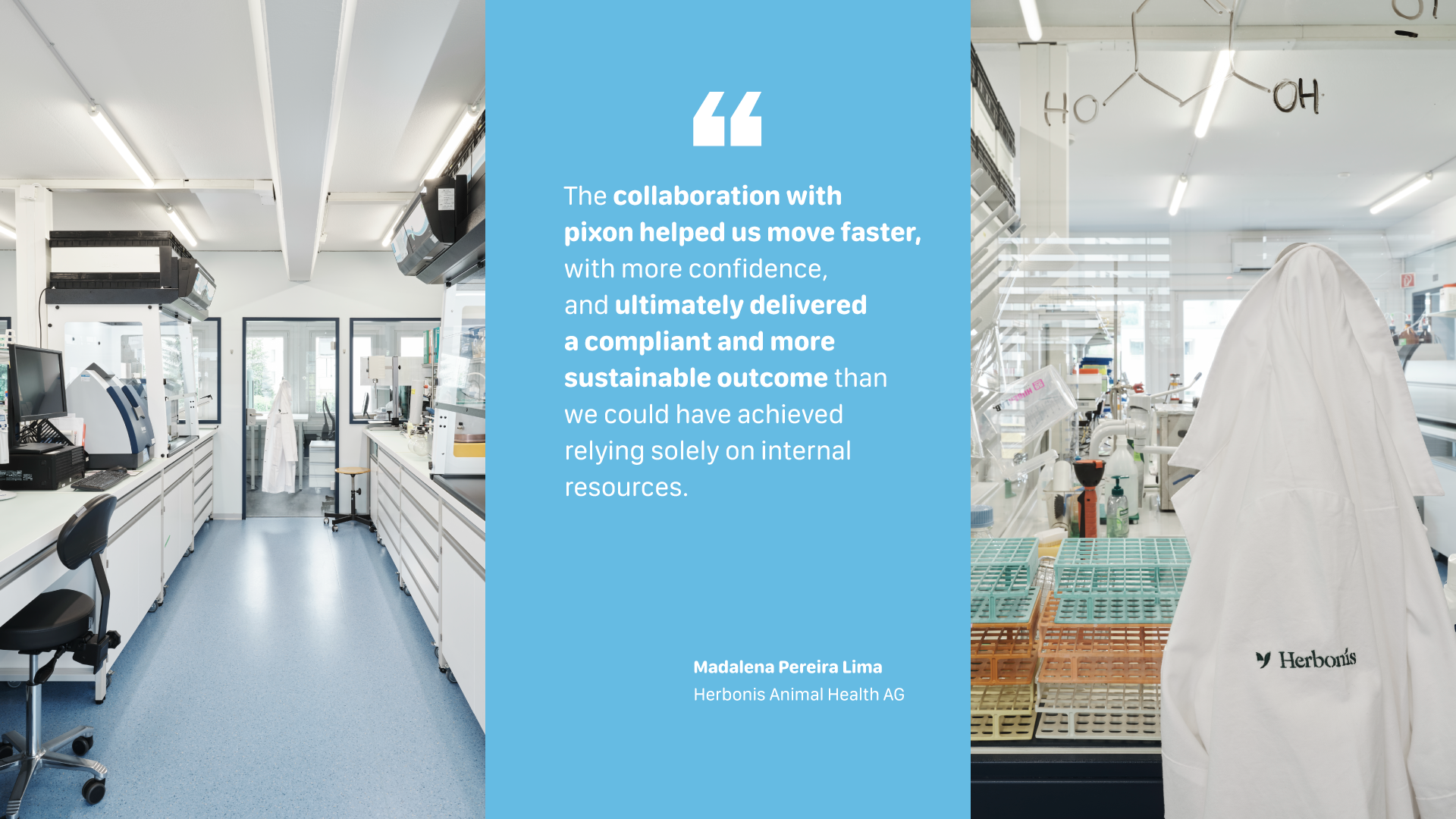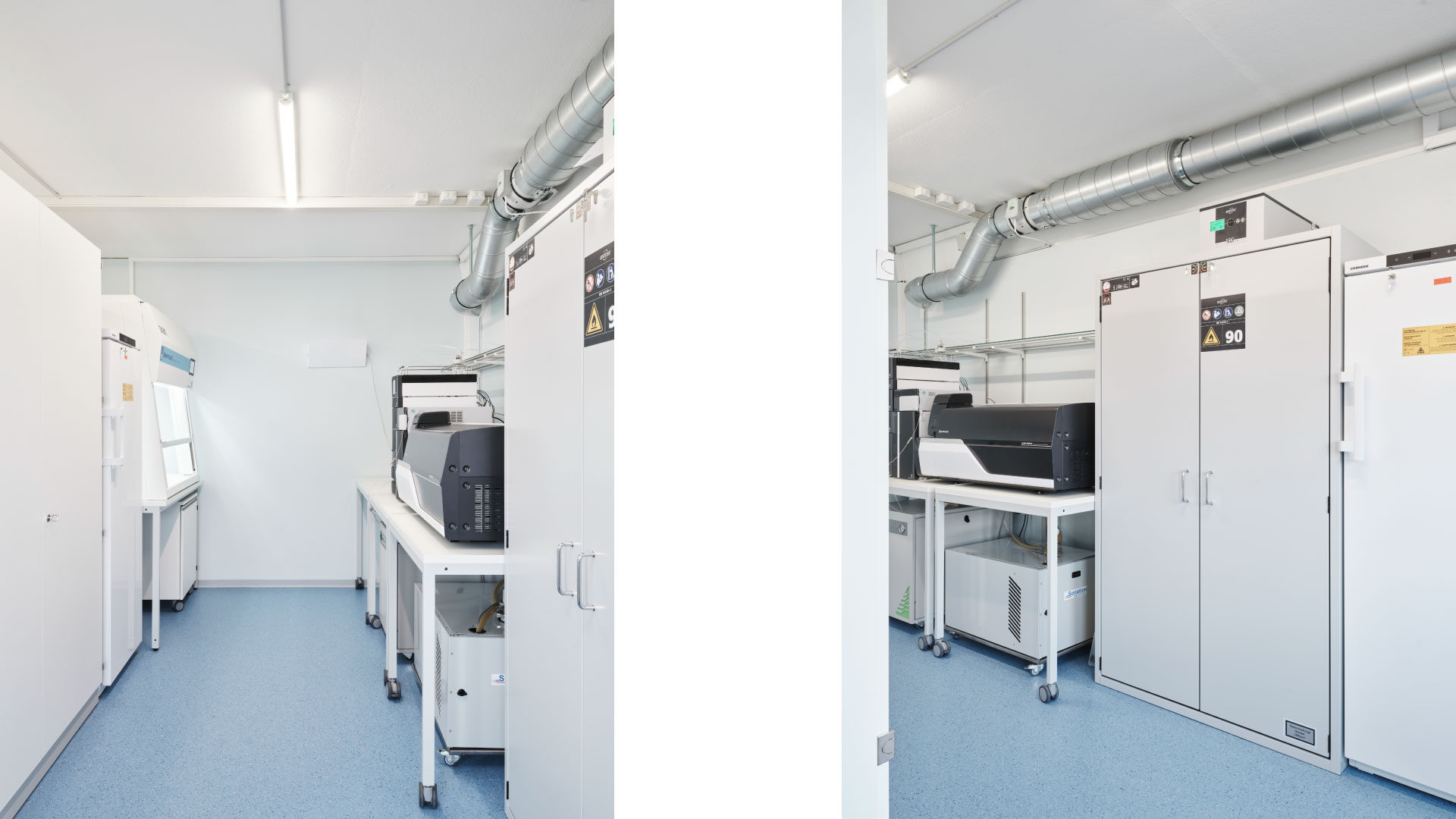

Madalena: The decisive factor behind the review and subsequent renovation of the analytics laboratory was the strategic need to ensure full compliance with latest safety regulations while enhancing the lab’s operational capacity and efficiency. The objective was to implement upgrades that would ensure a secure and comfortable working environment, fostering a culture of safety and well-being for all employees. Special attention was given to ergonomic design, air quality, and spatial organization to support both physical safety and psychological comfort. This initiative reflects our commitment to maintaining high standards of safety, anticipating evolving analytical demands, and ensuring sustained scientific excellence, while also prioritizing the people who make that excellence possible.
Madalena: The feasibility analysis helped us recognize areas where safety could be significantly enhanced, particularly around flammable solvent storage and the containment of HPLC systems. The risks didn’t feel critical on a daily basis, but they were present enough to warrant our full attention. The feasibility analysis gave us a clearer picture of how small improvements could make a big difference in reducing potential hazards and in preserving personnel safety and operational continuity. That perspective strongly influenced our decision to take proactive steps towards continuous improvement and risk mitigation to fulfil the evolving safety standards and to ensure long-term reliability.
Madalena: Creating an infrastructure that could grow with the team was essential. Our goal was to create a well-functioning environment that supports high productivity without compromising safety or analytical quality while integrating new instruments. Expanding and upgrading the lab was a strategic move to future-proof our capabilities to support collaborative work, implement new technologies towards keeping a high level of expertise, and to empower the team to innovate.
Hélène: The most critical hazard was the increased need to safely store large volumes of flammable substances, driven by a rising workload and staff growth. This made fire safety cabinets a top priority. Additionally, the planned increase in routine analytical experiments required equipment that prevents the emission of chemical vapours into the laboratory. These findings shaped the retrofit strategy, focusing on fire-resistant storage and effective vapour containment to ensure safety and long-term operational capacity.
Hélène: Before the retrofit, the laboratory could only accommodate three employees, limiting future growth. While all three options considered the safety requirements identified in the risk assessment, options 1 and 2 did not account for the planned increase in staff numbers or workload. However, option 3 addressed both the growing number of employees and the increase in analytical experiments, making it the safest and most sustainable solution for the future.
Madalena: The decision to engage pixon was driven by a clear recognition that we lacked the internal resources, time, and specialized knowledge required to carry out the full scope of work. Their support was essential in guiding us through each step with a structured, engineering-based approach, while flagging technical constraints we hadn’t fully considered. Their external perspective introduced technical depth, objectivity and expertise to execute the project efficiently and with a high technical standard besides our existing infrastructure constraints. The collaboration with pixon helped us move faster, with more confidence, and ultimately delivered a compliant and more sustainable outcome than we could have achieved relying solely on internal resources.

Hélène: The toughest challenge was the lab’s limited space and low ceilings, coupled with the need for a controlled ventilation system. To address these issues, the team selected specialised equipment designed for low ceiling heights and implemented customised furniture to maximise the use of restricted floor space. Next to an increase in air renewal capacities, we also optimised the flow of people and materials to expand the safe working area, making the work more efficient while ensuring full compliance with legal requirements. The result is a laboratory that showcases modern and regulation-compliant design, despite of the spatial limitations.
Madalena: Since the retrofit, the most impactful improvements have been in lab safety and workspace organization, especially in how we have integrated new analytical instruments. From a safety perspective, the retrofit introduced better ventilation and containment systems which have greatly enhanced our handling of hazardous substances. For new instruments, having purpose-built workstations with optimized power supply, ventilation, and ergonomic access has improved operational efficiency. Overall, these changes have brought a serene working atmosphere and a more structured and safer environment for everyone.

Madalena: Given the constraints of our infrastructure, implementing a state-of-the-art lab ventilation system with exhaust air was not feasible. In this context, the decision to opt for filtered fume hoods and filtered fireproof safety cabinets was a well-considered balance between safety and costs, as it provides effective containment and filtration of hazardous vapours without requiring ductwork or major building modifications. This was essential given our limitations, and still ensures a high level of protection for lab personnel. While the maintenance costs are higher, the modular nature of filtered fume hoods allows for easier relocation and reconfiguration, reducing renovation costs in case of lab organisation changes. Ultimately, this approach allowed us to maintain high safety standards and operational efficiency within the constraints of our facility, making it the most practicaland responsible choice.
Hélène: With future workload growth in mind, safety regulations required the replacement of standard cabinets with fireproof cabinets to enable the storage of larger volumes of flammable substances essential for analysis. Additionally, with planned staff increases, the demand for workspace in fume hoods will rise in the future. Opting for filtered fume hoods ensures safer conditions and increased working capacity, striking a balance between safety, practicality and long-term efficiency despite the higher maintenance costs.
Madalena: For older laboratories, I recommend prioritizing safety and compliance first, followed by aligning upgrades with operational needs. Staying current with evolving technologies is essential to remain competitive. Engaging an external laboratory planning company was a turning point for us: they provided critical expertise in infrastructure assessment, regulatory strategy, and modernization planning. Their input helped us avoid costly missteps and ensured our upgrades were both future-proof and aligned with the company’s mission.
Hélène: Keep pace with evolving laws and safety standards and actively engage staff and management by showing that compliance is the foundation of a safe workplace. Make modernizing critical safety infrastructure and training a top priority. And when in-house expertise falls short, bring in external specialists. They bring proven know-how, ensure compliance, and help avoid costly mistakes while building long-term lab resilience.
Photos: ©Boris Haberthür borishaberthuer.com